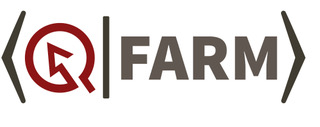
Pamela Davis Kivelson
Pamela Davis Kivelson (PDK) is a painter, photographer, sculptor, and a performer who works in many media and technologies. Her focus has always been on the experiential and the human in art. She holds a BA from Yale University and an MFA from the Chicago Art Institute. Since coming to Stanford in 2004, she has been, a Lecturer in the Symbolic Systems program, an Adjunct Lecturer in the Design Impact Program at Stanford University, and Artist in Residence to the Humanities and Sciences at Stanford University as well as at the Stanford Humanities Lab. More than 40 works of public art of hers, consisting of prints, sculptures, and paintings (many of them portraits), are on display around the Stanford campus at locations including Wallenberg Hall, Jordan Hall psychological portraits of faculty the McCullough Building, and the Cancer Center. Before coming to Stanford she founded and directed the Center for Science and Art at UCLA. See pdkgallery.com. She has also been Artist in Residence to the Volvo Group, the Society for Artificial Intelligence, and the Tycho Brahe Foundation in Sweden. Currently, she is Artist in Residence to Q-FARM at Stanford University.
PDK uses technologies, both traditional and digital, including virtual experiences, to transform non-visual phenomena into visual phenomena. An example is artworks inspired by the distortions of light and space produced by the intense gravitational fields near a black hole - which is the content of her current exhibit, "Art of Black Holes," in the Physics and Astronomy Building at Stanford that is scheduled to run through fall 2023. She portrays collective experiences, including scientific research, primarily through painting and photography, but also using multi-media, artificial intelligence (AI), and performance. Her work also explores bias and non-linear identities. For example, she had an exhibit titled "Non-linear identities" in 2019 at Stockholm University.
In 2016 she had a show, "My After-Voices in a Democracy," at Phillips Exeter Academy in New Hampshire. It was inspired by her desire to represent the resilience she saw in Paris in the aftermath of the tragic events of Nov 2015. Resilience through portraiture has been a theme throughout her work. She co-created an empathy and compassion training program for doctors at LPCH at Stanford. Vision science was the inspiration underlying her exhibit at the Krannert Museum at UIUC titled, ”Before Recognition.” In 2014, at Pace Gallery for Art and Technology, she and filmmaker Robin Swicord created an installation and performance piece that fused art and technology to explore the emotions involved in the Silicon Valley pitch. See pitchingX.com. She had a one person show at the Mark Miller Gallery in New York in 2014. That same year she also created a sculpture / performance, "Drawing with Tetrahedra," at Stanford’s Bing Concert Hall in collaboration with the Philharmonia Baroque Orchestra. That sculpture: "The Icosahedron" is in the process of being installed at UBC’s Quantum Institute.
She explores awareness of the presence of shifts and transformations created in the process of creation. This vestigial mysterious quality she calls an "art shadow." The random embodied fragments of inspiration, memories and dreams offer a simultaneous encounter with the past and the present. It is these complex conversations that animate her work.
